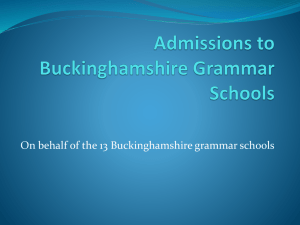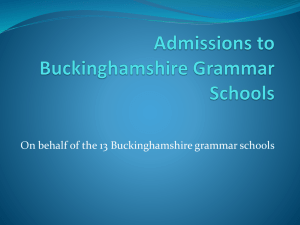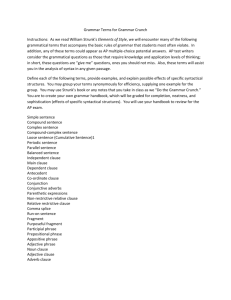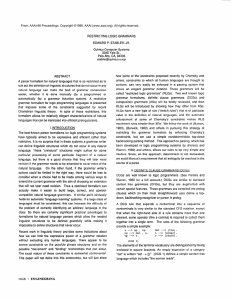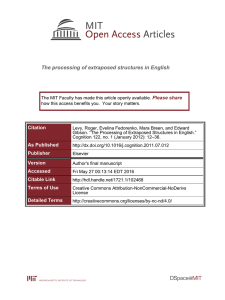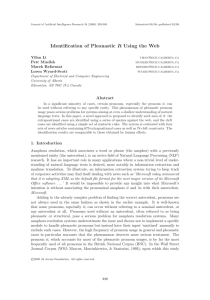8th international conference `Language, Culture and Civilization
advertisement
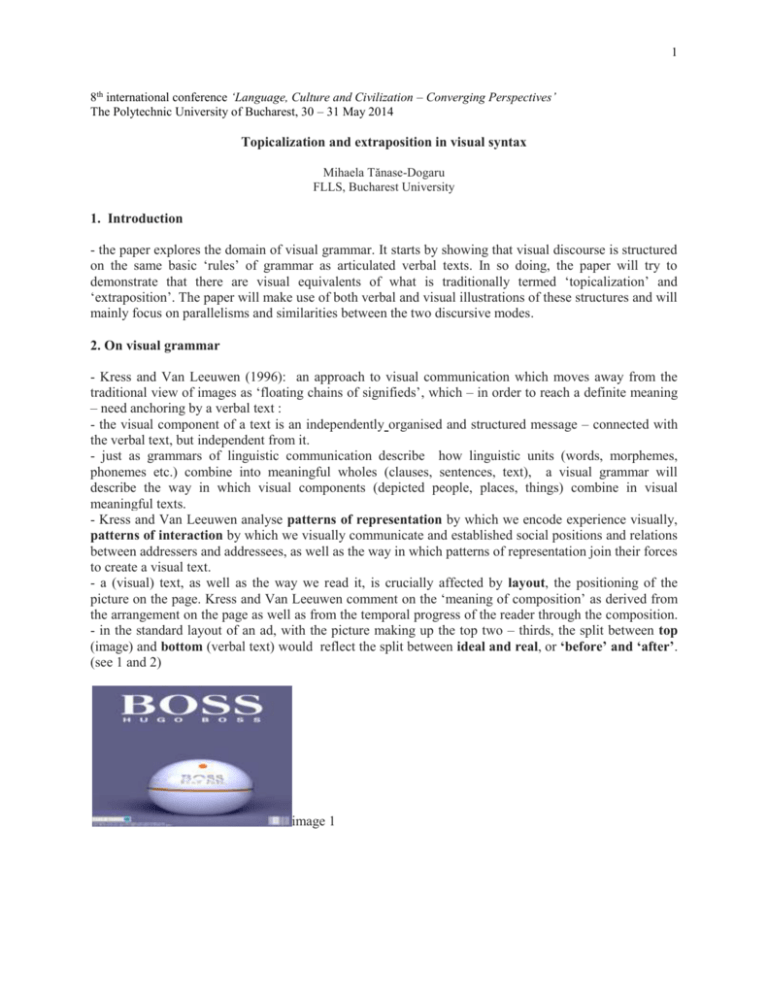
1 8th international conference ‘Language, Culture and Civilization – Converging Perspectives’ The Polytechnic University of Bucharest, 30 – 31 May 2014 Topicalization and extraposition in visual syntax Mihaela Tănase-Dogaru FLLS, Bucharest University 1. Introduction - the paper explores the domain of visual grammar. It starts by showing that visual discourse is structured on the same basic ‘rules’ of grammar as articulated verbal texts. In so doing, the paper will try to demonstrate that there are visual equivalents of what is traditionally termed ‘topicalization’ and ‘extraposition’. The paper will make use of both verbal and visual illustrations of these structures and will mainly focus on parallelisms and similarities between the two discursive modes. 2. On visual grammar - Kress and Van Leeuwen (1996): an approach to visual communication which moves away from the traditional view of images as ‘floating chains of signifieds’, which – in order to reach a definite meaning – need anchoring by a verbal text : - the visual component of a text is an independently organised and structured message – connected with the verbal text, but independent from it. - just as grammars of linguistic communication describe how linguistic units (words, morphemes, phonemes etc.) combine into meaningful wholes (clauses, sentences, text), a visual grammar will describe the way in which visual components (depicted people, places, things) combine in visual meaningful texts. - Kress and Van Leeuwen analyse patterns of representation by which we encode experience visually, patterns of interaction by which we visually communicate and established social positions and relations between addressers and addressees, as well as the way in which patterns of representation join their forces to create a visual text. - a (visual) text, as well as the way we read it, is crucially affected by layout, the positioning of the picture on the page. Kress and Van Leeuwen comment on the ‘meaning of composition’ as derived from the arrangement on the page as well as from the temporal progress of the reader through the composition. - in the standard layout of an ad, with the picture making up the top two – thirds, the split between top (image) and bottom (verbal text) would reflect the split between ideal and real, or ‘before’ and ‘after’. (see 1 and 2) image 1 2 image 2 - the split between left and right can be analyzed in terms of a distinction between given, old information (what the receiver already knows) and new information. The layout usually follows a pattern similar to that of a sentence (see images 3 and 4) image 3 image 4 3. On extraposition and topicalization - regardless of its syntactic role ((Su(bject), D(irect) O(bject), Prepositional O(bject)), the complement clause appears at the right periphery of the sentence, while the pronoun it appears in the position which ought to have been occupied by the clause, thus indicating its syntactic function. 3 (1) Subject a. That Pauline moved to Kansas surprised me indeed. b. It surprised me indeed [that Pauline moved to Kansas]. (2) Direct object a. The engineer correctly understood [that the bridge would hold]. b. The engineer correctly understood it [that the bridge would hold]. (3) Prepositional object a. Can you swear [that the accused man was at your house all Friday evening]? b. Can you swear to it [that the accused man was at your house all Friday evening] ? - the clause in peripheral position is said to be extraposed. Technically, the extraposed clause is usually assumed to be adjoined to the VP. - extraposition is extremely frequent if not quasi-obligatory for subject clauses and marginal for DO and PO clauses. This asymmetry is motivated by structural as well as by functional considerations. - two discourse principles of End-Focus and End-Weight, which play a major role in determining word-order in English. Constituents which are focused and constituents which are long and heavy tend to occur towards the end of the sentence. -the reverse of extraposition from subject position is the so-called TOPICALIZATION structure. (4) That he went mad is very clear these days - a that-complement in clause-initial position is not actually in subject position but in topic position. This can be demonstrated by the fact that that-complement subjects cannot be questioned, i.e. they cannot appear in the Nom case position in inversions: (5) That he failed the exam was no surprise = *Was [that he failed the exam] a surprise? - the concept of focus relates to the information structure of a sentence. In any sentence the point of information which is perceived as most salient or relevant from the speaker’ s point of view is the focus of the sentence. Focus may be indicated phonologically, by means of stress, and/or by various syntactic means. - the idea of focused information is related to the idea of ‘new information’, as opposed to ‘old information’ or ‘given information’ , defined as information which has been under discussion. Information which has been under discussion is ‘given’ and can be ‘construed’ from the context. - the Topic of a sentence is 'what the sentence is about', a constituent representing ' given' , 'old' information. 4. Extraposition and topicalization in visual grammar 4.1. Extraposition 4 image 5 image 6 image 7 image 8 5 image 9 4.2. Topicalization image 10 image 11 image 12 6 image 13 image 14 image 15

